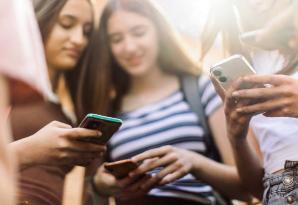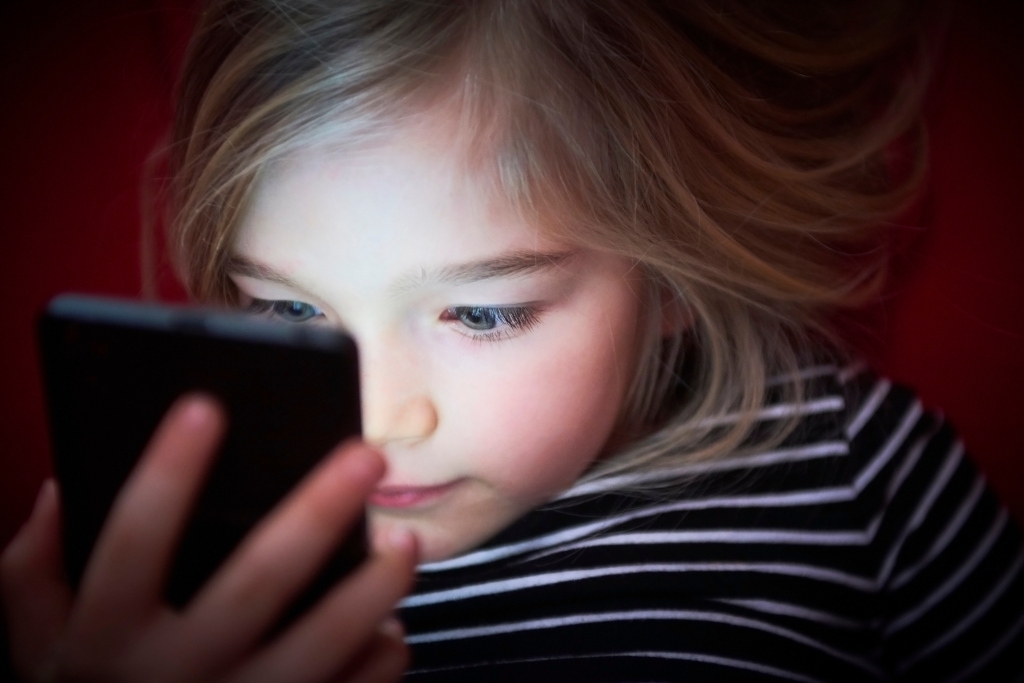Peer Reviewed: Using Instagram to Nurture Relatedness Amongst Girls in Physical and Health Education

Previously published in Volume 84, Issue 1
Abstract
The aim of secondary school physical and health education [PHE] is to help youth develop physical activity and health behaviors that will carry them through life. Girls place considerable importance on having a socially supportive learning environment in PHE. This paper describes an initiative designed by a high school PHE teacher to tap into a world adolescent girls already use: social media. This teacher used Instagram to support girls being active and to help develop their sense of relatedness in PHE. Steps on how to implement a similar initiative are presented.
Introduction
The aim of secondary school physical and health education [PHE] is to help youth develop physical activity and health behaviors that will carry them beyond PHE and into adulthood. However, adolescent girls’ disengagement from high school PHE as indicated by high dropout rates has been well documented (Azzarito, Solmon, & Harrison, 2006; Biddle et al. 2005; Camacho-Minano, LaVoi, & Barr-Anderson, 2011). Only 15% of girls in British Columbia elect to take PHE in grades 11 and 12 once it is no longer mandatory. This is in comparison to the 34% enrollment by boys (N. Poeschek, personal communication, July 14th, 2012). This disengagement has provided motivation for the examination of alternative curricula to facilitate girls’ engagement in PHE, and the exploration of learning environments preferred by girls. For example, Gibbons and Gaul (2004) found that girls placed considerable significance on the opportunity to actively choose and plan physical activities, and a socially supportive learning environment. This sense of connectedness to classmates and the teacher can also be referred to as relatedness. Relatedness is defined as an individual’s inherent desire to feel connected to others (Deci & Ryan, 2000). One possible strategy to use in order to develop relatedness in PHE is social media, technology the students already know and use. For the purposes of this paper, social media will be defined as: applications in which the girls in PHE are active participants, generating their own messages and sharing these messages with others (Hanson et al., 2011). The effects of social media in education have been researched in numerous content areas but, to date, there is very little research in the area of social media and PHE. With the strong importance that girls place on relatedness in PHE, social media applications such as Instagram may be promising learning tools for increasing this sense of relatedness.
This paper describes an initiative designed by a high school PHE teacher in response to her goal of providing a socially supportive learning environment to girls in PHE. This initiative is grounded in the concept of a relatedness-supportive learning environment, one in which students have opportunities to develop healthy relationships with others. This initiative utilizes the increasingly popular technology of social media, more specifically Instagram.
Putting theory into practice: using social media to foster relatedness in PHE
Relatedness is the feeling of being connected to others in a social context (Ryan & Deci, 2002). Deci and Ryan (2000) further define relatedness as caring for and feeling cared for by others and suggest that relatedness is a psychological need integral for human growth and development. Individuals seek social environments that support relatedness and avoid social environments that impede it (Ryan & Deci, 2002). A relatedness-supportive environment is one in which individuals have the opportunity to develop healthy relationships with others that include support and encouragement (Cox, Duncheon, & McDavid, 2009; Ullrich-French, McDonough, & Smith, 2012).
The concept of relatedness is grounded in the self-determination theory [SDT] of motivation (Deci & Ryan, 2000). Self-determination theory describes three basic and universal psychological needs that facilitate intrinsic motivation: autonomy, competence, and relatedness (Deci & Ryan, 2000). According to SDT, if a student’s need for autonomy (a sense of choice), competence (a feeling of success), and relatedness (a sense of social connection) are met, they will be intrinsically motivated to engage in a certain behavior, such as physical activity. Compared to the concepts of autonomy and competence, there has been far less attention paid to the strategies most likely to help students feel socially related and the specific teacher behaviors that satisfy students’ feelings of relatedness during PHE.
PHE has an inherent social aspect and research has shown that a sense of relatedness can motivate students, particularly girls, to participate and be engaged in PHE (Cox, Duncheon, & Mcdavid, 2009; Cox & Williams, 2008; Gibbons, 2014). For example, in their examination of the experiences of adolescent girls in PHE, Shen, McCaughtry, Martin, Fahlman, and Garn (2012) found that girls with a high sense of relatedness were more likely to show enthusiastic participation in PHE. Similarly, in their examination of a senior PHE course tailored to meet the needs and interests of adolescent girls, Pfaeffli and Gibbons (2010) found that the girls emphasized the sense of connection they felt in an all-girls’ course, expressing the importance of participating with friends, making new friends, and feeling safe. These authors propose that without this sense of relatedness and support, it appears unlikely that girls would sufficiently let their guard down to become actively involved in PHE.

Teachers and leaders can foster a relatedness supportive environment in PHE by using strategies that develop respectful relationships with their students, and by taking actions that help students develop positive relationships with their classmates, peers, and community (Sparks, Dimmock, Whipp, Lonsdale, & Jackson, 2015). One possible avenue to explore in order to foster relatedness in PHE is the use of social media.
It has been proposed that social media may offer an avenue for nurturing a sense of connection amongst students (Vollum, 2014). Sites such as Facebook have been found to serve as a source of social connectedness (Grieve, Indian, Witteveen, Tolan, & Marrington, 2013) and social support (Nabi, Prestin, & So, 2013). However, students’ use of social media is often characterized as detrimental to education, social values, and mental health (Błachnio, Przepiorka, & Pantic, 2015; Sagioglou & Greitemeyer, 2014) by teachers and popular media sources. Alternatively, some have been advocates of social media as a means to benefit educational experience and learning (Greenhow, 2011). Regardless of any apprehensions, social media has become an important factor in our world, and it is also becoming a factor in almost all educational settings.
A review conducted by Vollum (2014) showed how current health and wellness programs outside of the K-12 education system are already using social media. The positive findings show that, at a minimum, learners in these settings benefit from the use of social media by acquiring knowledge, communicating and interacting with other learners, and building relationships with and between learners and instructors (Hanson et al., 2011; Polsgrove & Frimming, 2013). Hansen et al. (2011) found that social media has the opportunity to support the development of relationships amongst individuals trying to make health behaviour changes thus increasing communication. With PHE aspiring to foster lifelong healthy decision makers, it is important to look at the behaviors of adults as they maneuver through the process of making decisions regarding their health behaviors. Oh, Lauckner, Boehmer, Fewins-Bliss, and Li (2013) found that nearly 40% of individuals with a health concern used Facebook as a means of social support.
It is clear that a large number of people choose to use social media when making decisions in the health and wellness area and students in today’s world are already using social media in their educational settings. In the US for example, between 85 and 99% of students use social networking sites such as Facebook (Matney & Borland, 2009). If educators are preparing our students to enter the world, then it is important to be exposing them to the realities of that world. Sound pedagogy includes tailoring teaching to the needs of the culture and understanding how the current or modern-day student actually learns best (Frimming et al., 2011). In knowing that a sense of relatedness has a positive impact on girls’ PHE experiences and that social media is being widely used by students and use of social media can have a positive impact on health and wellness in personal and community wellness programs, a teacher wanted to explore the potential impact of social media as a relatedness supportive tool for girls in PHE. Initiatives, like the one described below, that target learning and assessment activities that enhance a relatedness-supportive environment by use of social media may contribute directly to girls’ positive involvement in PHE.
The social media initiative: Instagram
Kate Baker, a high school physical and health educator at Oak Bay High School in British Columbia, Canada, decided to explore a social technology as a possible strategy to foster relatedness support amongst her grade ten female PHE participants. With this goal in mind, she wanted to experiment with a free social media application (app), Instagram, in her PHE classes. Oak Bay High is a secondary school set in an upper middle class neighbourhood where students have access to a variety of devices such as smart phones, IPads and tablets. Below, Baker discusses her goals, how she implemented the initiative, and what she learned in the process.
Instagram is an online photo sharing social web service that lets people share images with friends that were captured with a mobile device. Baker wanted a way to connect with the girls in her PHE class and provide them with an opportunity to see mementos (the images) of what they did in class. She wanted to combine this use of social media with technology that she was already using in her classes, heart rate monitors. She wanted to use Instagram as a way to showcase the girls’ monitor results. Since the girls were already so familiar with social media, she felt Instagram was an easy way to accomplish the goal of highlighting their accomplishments and increasing relatedness. Baker also saw it as a facilitator for the girls to show their friends the activities they participated in and for the other students in the school to check it out as well. Finally, she saw it as a way to gather interest for the new senior PHE girls’ class. At the end of the course she gathered feedback from the students on the impact of using Instagram to post course activities.
Ties to relatedness. Baker felt the use of Instagram helped to create a relatedness supportive environment by connecting the class, the classmates, her as the teacher, and students outside of the class. This is shown by her well over two hundred followers on Instagram. She managed to gain a following from both PHE classes and PHE teachers from around the world. She felt using Instagram helped to create a community with her PHE classes. Additionally, by incorporating personal touches (e.g. pictures of her son and her hiking) to show students that they share the same interests and she is actually human has really helped to create great connections with her students. Instagram motived the students in PHE to participate, especially when they were wearing the heartrate monitors because they knew their results would be posted. The girls’ comments on the posts showed how invested they were and how much they enjoyed the process. After she would post girls’ results, other girls in the class would often comment on the image with a heart icon or a thumbs-up icon to show their support and encouragement. It also provided them with the opportunity to look at the account any time they wished and go back through all of the posts and revisit everything they did that year in PHE.
Steps in implementation. Baker began her social media initiative by creating an Instagram account that her students could follow. She posted activities and achievements from the course on the account. She was able to do this as consent was gathered from the students at the beginning of the year through a school wide consent form to post students on social media. If students in her class and their parents had not signed this form then she did not post their pictures or names online.
Baker created an Instagram account over the weekend and introduced the idea to her students on the Monday. She informed them of her user name and they all started following the account. She told them that she would not follow them back; Baker assured them that it was not a tool for her to use in order to check on their lives. Instead she wanted it to function as a tool to keep their class connected and show others the great activities they did in class on a daily basis. The images in Figure 1 are examples of these Instagram posts. She found she did not need any further instruction or a lesson to show the girls how to use the app as all of them were already familiar with Instagram.
Figure 1. A snapshot of some of the activities tried in PHE class
When beginning use of the app, Baker started taking pictures of the girls who were wearing heart rate monitors when participating in PHE and she posted their statistics along with their pictures (Figure 2). She felt it gave them credit for using a monitor. As an additional bonus, Wahoo (a tech-fitness company that has created sensors and devices for fitness enthusiasts) became aware of the Instagram posts and sent the class thirty free heartrate monitors. She continued to do this throughout the year as well as taking and posting videos. Baker also started “#wisewordswednesday” where she posted inspirational quotes for followers to think about (Figure 3).
Figure 2. Girls using heart rate monitors in PHE
Figure 3. Some of the inspirational quotes posted on Instagram for #wisewordswednesday
Challenges and benefits. There were no large obstacles or challenges in the process. Baker just had to make sure that all of the girls were comfortable using the app. She had previously done a lesson with the Wahoo Fitness app in the gym. She projected her IPad on the wall and made it very large. The students followed along on their phones once they downloaded the app. However, this was not necessary with Instagram as they were already so familiar with the technology that it was easy for them to pick up and then help others later. Many of today’s students are familiar with photo and video recording applications as these products are widely available, easy to operate, and inexpensive (usually free) to acquire.
There were a few girls who did not want to have their pictures taken, so Baker had to be careful not to have them in the background of others’ photos. Additionally, for those who did want to participate, she had to make sure they were all equally included in the pictures and posts. The previous posts acted like image-rich digital archives so it was easy to tell who needed to be documented and who already had a lot of time in front of the camera. Sometimes, in her busy classes, it was difficult for her to find the time to take a picture or video. She would often miss memorable moments or become too busy to post for a couple of days and the girls would notice. Therefore, she started setting a reminder on her phone so she would not forget. She also started to have those students who were injured or sick act as the photographers or videographers for the day so that really helped to capture the moments she did not see.
Summary
Never knowing a world without computers and the Internet, today’s youth do not see technology and social media applications as tools, but rather as integral parts of their everyday lives (Merritt, 2002). Growing up with unprecedented access to technology has changed the way young people communicate, connect to one another, interact, and learn. Bleed (2005) states that when educators utilize multimedia in the classroom, we will see that “the language of the screen is capable of constructing complex meanings independent of text” (p. 6). The current initiative showed promise as a social media driven approach designed to provide girls with a relatedness-supportive learning environment in PHE. A PHE teacher shared the social media app she utilized, the way she felt the use of technology nurtured relatedness in her classes, how she implemented Instagram within her PHE classes, and the challenges and benefits of using the app. There is a need for further research to examine the effectiveness of Instagram in promoting relatedness in PHE among adolescent girls. With some planning and creativity, initiatives that utilize social media to help promote relatedness can successfully be integrated in PHE in order to further support girls in being active. Girls who experience a relatedness-supportive learning environment in PHE and are able to use social media for support and education are positioned to become better communicators, team members, and more motivated to be physically active.
References
Azzarito, L, Solmon, M.A., & Harrison, L.J. (2006). “…If I had a choice, I would…” a feminist poststructural perspective on girls in physical education. Research Quarterly for Exercise and Sport, 77(2), 222–239. http://dx.doi.org/10.1080/02701367.2006.10599356
Biddle, S. J. H., Whitehead, S.H., O’Donovan, T.M., and Nevill, M.E. (2005). Correlates of participation in physical activity for adolescent girls: A systematic literature review and update.” Journal of Physical Activity and Health, 2(4), 423–434. http://dx.doi.org/ 10.1123/jpah.2.4.423
Błachnio, A., Przepiorka, A., & Pantic, I. (2015). Internet use, Facebook intrusion, and depression: Results of a cross-sectional study. European Psychiatry, 30, 681–684. http:// dx.doi.org/10.1016/j.eurpsy.2015.04.002.
Bleed, R. (2005, August). Visual literacy in higher education (Educause Publication No. ELI4001). Retrieved from https://library.educause.edu/~/media/files/library/2005/1/eli4001-pdf.pdf
Camacho-Minano, M.J., LaVoi, N.M., & Barr-Anderson, D.J. (2011). Interventions to promote physical activity among young and adolescent girls: a systematic review. Health Education Research, 26(2), 1025–1049. http://dx.doi.org/10.1093/her/cyr040
Chordas, L. (2008). Y new technology? Best’s Review, 109(6), 88–90.
Cox, A., Duncheon, N., & McDavid, L. (2009). Peers and teachers as sources of relatedness perceptions, motivation, and affective responses in physical education. Research Quarterly for Exercise and Sport, 80, 765–773. http://dx.doi.org/10.1080/02701367.2009.10599618
Cox, A.E., & Williams, L. (2008). The roles of perceived teacher support, motivational climate, and psychological need satisfaction in students’ physical education motivation. Journal of Sport & Exercise Psychology, 30, 222–239.
Deci, E.L., & Ryan, R. M. (2000). The “what” and “why” of goal pursuits: Human needs and the self-determination of behavior. Psychological Inquiry, 11, 227-268. http://dx.doi.org/ 10.1207/S15327965PLI1104_01
Frimming, R. E., Polsgrove, M. J., & Bower, G. G. (2011). Evaluation of a health and fitness social media experience. American Journal of Health Education, 42(4), 222–227. http://dx.doi.org/10.1080/19325037.2011.10599191.
Gibbons, S.L. (2014). Relatedness-supportive learning environment for girls in physical education. LEARNing Landscapes, 7(2), 139-150.
Gibbons, S.L., & Gaul, C. (2004). Making physical education meaningful for young women: Case study in educational change. Avanté, 10(2), 1-16.
Greenhow, C., & Robelia, B. (2009). Old communication, new literacies: Social network sites as social learning resources. Journal of Computer-Mediated Communication, 14(4), 1130–1161. http://dx.doi.org/10.1111/j.10836101.2009.01484.x.
Grieve, R., Indian, M., Witteveen, K., Tolan, G. A., & Marrington, J. (2013). Face-to- face or Facebook: Can social connectedness be derived online? Computers in Human Behaviour, 29, 604–609.
Hanson, C., West, J., Neiger, B., Thackeray, R., Barnes, M., & McIntyre, E. (2011). Use and acceptance of social media among health educators. American Journal of Health Education, 42(4), 197–204. http://dx.doi.org/10.1080/ 19325037.2011.10599188.
iHealthBeat. (2012). Consumers tapping social media to access health information. Retrieved from http://www.ihealthbeat .org/articles/2012/4/17/consumers-tapping-social-media -to-access-health-information.
Matney, M., & Borland, K. (2009). Facebook, blogs, tweets: How staff and units can use social networking to enhance student learning. Seattle, WA: In the National Association for Student Personnel Administrators.
Merkt, M., Weigand, S., Heier, A., & Schwan, S. (2011). Learning with videos vs learning with print: The role of interactive features. Learning and Instruction, 21, 687–704. http://dx.doi.org/10.1016/j.learninstruc.2011.03.004
Merritt, S.R. (2002). Generation Y: A perspective on America's next generation and their impact on higher education. The Serials Librarian, 42(1-2), 41-50.
Nabi, R. L., Prestin, A., & So, J. (2013). Facebook friends with (health) benefits? Exploring social network site use and perceptions of social support, stress, and well-being. Cyberpsychology, Behaviour, and Social Networking, 16(10), 721–727.
Oh, H.J., Lauckner, C., Boehmer, J., Fewins-Bliss, R., & Li, K. (2013). Facebooking for health: An examination into the solicitation and effects of health-related social support on social networking sites. Computers in Human Behavior, 29(5), 2072–2080. http://dx.doi.org/10.1016/j.chb.2013.04.017.
Olafson, L. (2002). 'I hate phys. ed': Adolescent girls talk about physical education. Physical Educator, 59(2), 67-75.
Pfaeffli, L., & Gibbons, S.L. (2010). Girls getting active: Exploring a physical education program tailored to young women. PHEnex Journal, 2(3), 1–21.
Polsgrove, M. J., & Frimming, R. E. (2013). A creative way to utilize social media to enhance fitness and health knowledge. Strategies, 26(2), 3–7. http://dx.doi.org/10.1080/08924562.-2013.764794.
Ryan, R.M., & Deci, E.L. (2002). An overview of self-determination theory. In E.L. Deci & R.M. Ryan (Eds.), Handbook of self-determination research (pp. 3-33). Rochester, NY: The University of Rochester Press.
Sagioglou, C., & Greitemeyer, T. (2014). Facebook’s emotional consequences: Why Facebook causes a decrease in mood and why people still use it. Computers in Human Behavior, 35, 359–363.
Shen, B., McCaughtry, N., Martin, J., Fahlman, M., & Garn, A. (2012). Urban high-school girls’ sense of relatedness and their engagement in physical education. Journal of Teaching in Physical Education, 31, 213–245. http://dx.doi.org/10.1123/jtpe.31.3.231
Sparks, C., Dimmock, J., Whipp, P., Lonsdale, C., & Jackson, B. (2015). “Getting connected”: High school physical education teacher behaviors that facilitate students’ relatedness support perceptions. Sport, Exercise, and Performance Psychology, 4(3), 219–236. http://dx.doi.org/10.1037/spy0000039
Standage, M., Duda, J. L., & Ntoumanis, N. (2003). A model of contextual motivation in physical education: Using constructs from self-determination and achievement goal theories to predict physical activity intentions. Journal of Educational Psychology, 95, 97–110. http://dx.doi.org/10.1037/ 0022-0663.95.1.97
Ullrich-French, S., McDonough, M., & Smith, A. (2012). Social connection and psychological outcomes in a physical activity-based youth development setting. Research Quarterly for Exercise and Sport, 83(3), 431–441. http://dx.doi.org/ http://dx.doi.org/10.1080/02701367.2012.10599878
Wahoo Fitness (2017, n.d.). About us [Web page]. Retrieved from http://eu.wahoofitness.com/about-us










